3 Artists & their paper creations
This month we are focusing on the material of Paper. Paper is a material that has been used for centuries and we all often use it every day. From large Paper sculptures to delicate paper cut-outs, we take a look at the different ways it is being used in Art by chatting with 3 different paper artists from the UK.
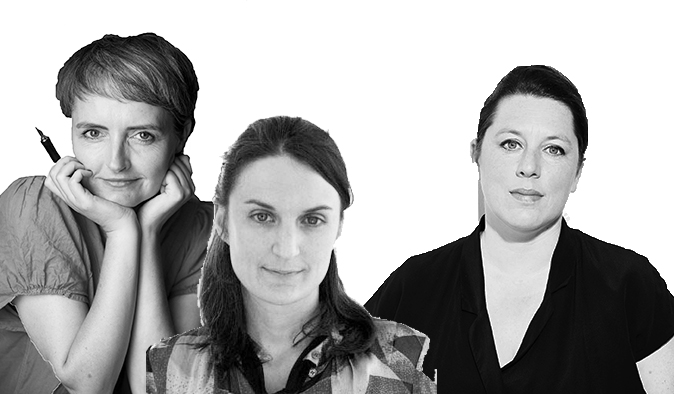 Left to Right: Claire Brewster (CB), Su Blackwell (SB) & Zoe Bradley (ZB)
Left to Right: Claire Brewster (CB), Su Blackwell (SB) & Zoe Bradley (ZB)
- Claire Bewster is a multimedia artist from Lincolnshire who works primarily in paper but also uses metal and paints to express the beauty in nature.
- Su Blackwell is an artist from Sheffield who works predominantly with paper and usually finds her inspiration within the realm of fairy-tales and folk-lore.
- Zoe Bradley from Warwickshire, works with different papers from all over the world to create 3D Sculptures, but started as an apprentice for Alexander McQueen.
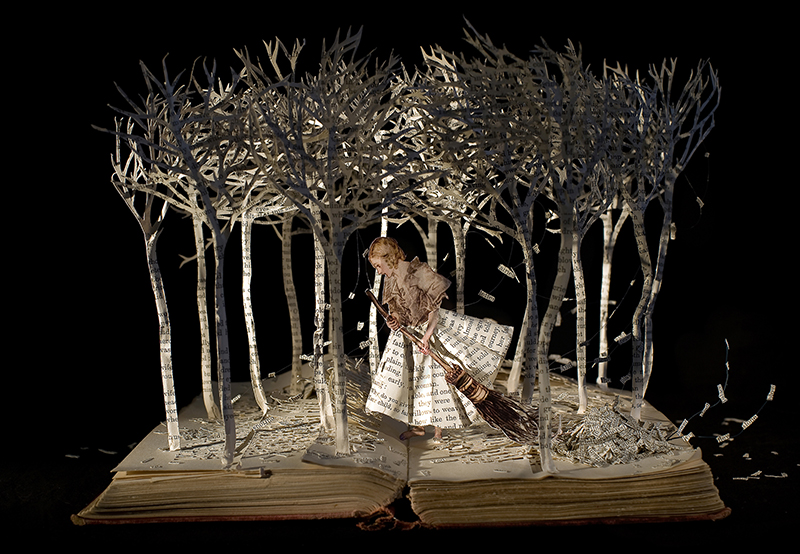
The Girl in the Wood – Su Blackwell
Can you tell me about the first time you created something with paper, and how it made you feel?
CB: The very first time I made something from paper was when I used to do scrapbooking as a child – It was one of my favourite activities. I made my first paper cuts about 14 years ago and have been hooked ever since and it’s still my favourite medium now.
SB: Losing my father was a turning point, where I started looking for ways of expressing my grief. I read a legend about the butterfly being a metaphor for the soul, and so I began cutting butterflies into the pages of the book, cutting through each page with a scalpel, I set about suspending the butterflies on nylon threads and attaching them to the book, giving the impression the butterflies were flying out of the pages of the book.
The first cut I made into the page of the book, I remember it felt wrong, it took a few minutes as I was questioning whether I should do it. Once I cut into the book, there was no going back. I felt that I would do the book an injustice if i didn’t transform it into something beautiful and meaningful.
ZB: Paper was something I was keen to explore further after I had been introduced to working with non-conventional materials in a fashion sense, during my time at Alexander McQueen. The first ‘fashion’ piece I created in paper was a pleated dress for the label Michiko Koschino in 2005. I knew after this experience that paper gave me the texture, form and immediate silhouette I was looking for in my work. Gradually the commissions grew into larger installations. My love of flowers has become a huge part of my vocabulary, as my mother and grandfather were keen gardeners.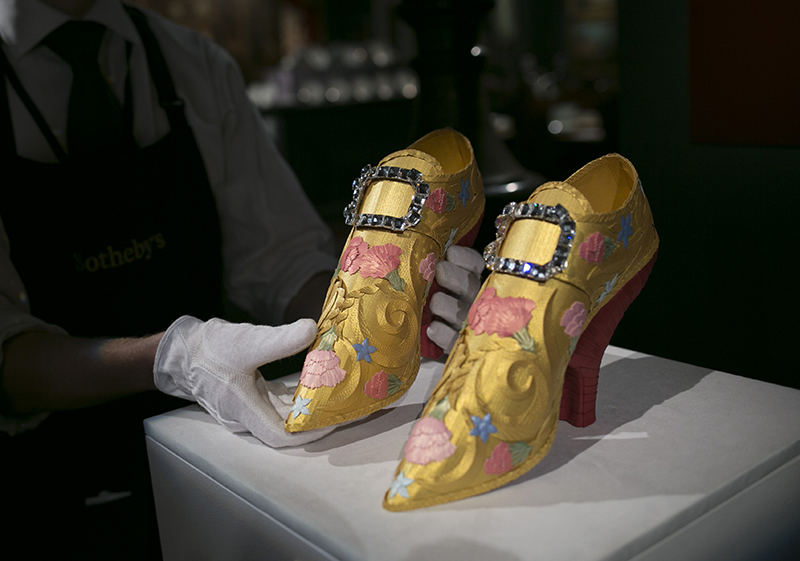
Aristocrat Shoe in Sothebys by Zoe Bradley
What is it you love about Paper, why is it special to you?
CB: I love paper because it has such a beautiful tactile quality, it can be used for many things. I love working with vintage maps and atlases, the paper and printing is so beautiful – it’s really a joy to work with. Whilst paper is inherently fragile is also has an inherent strength that is alway surprising.
SB: I love everything about paper, it’s tactility, variety, diversity, it’s humble qualities, I love how it’s qualities change as the paper ages. I like how it moulds, shapes, rips, folds and creases in someone’s hand, how it can be transformed from something flat to something sculptural. What I love most about it, is that it appears a fragile material, when in fact it is quite strong and robust.
ZB: I work like a tailor just in paper! It involves lots of folding cutting and many pieces are stitched together. For example the dresses I created for the Boodles campaign were made entirely from paper and patterns cut to fit the model. The advantages are that paper is endless and can be sourced in abundance and that it can be so easily formed. The disadvantage is that the sculptures can dent and tear easily. Paper is a delicate material so you have to approach it with a sensitivity and patience.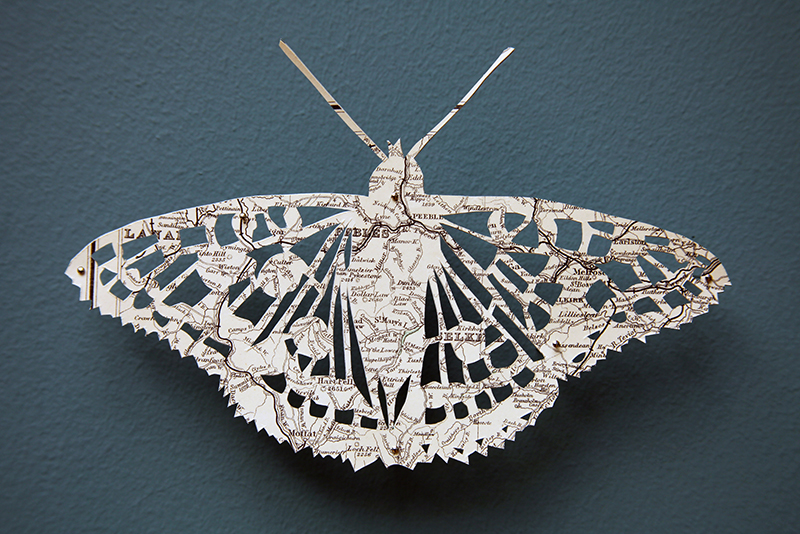
Apocalypse of Butterflies by Claire Brewster
What has been your favourite paper project, can you tell us a little about it?
CB: I really loved being part of the exhibition The First Cut, at Manchester Gallery. I was commissioned to make an installation for one of the Pre Raphaelite galleries and also to install one of my works in the main exhibition. I chose to make a flock of butterflies as butterflies are deeply symbolic in Pre Raphaelite paintings, symbolising life. The butterflies were installed directly on to the wall in the gallery.
SB: So far, the Bronte Parsonage Museum has been my favourite project. I was commissioned by the Museum to create a set of installaions. I was lucky enough to be given access to the Bronte Museum collections of letters and early manuscripts on teeny pieces of paper, as paper was a rare commodity in those days. I created installations in each of the rooms of the house, which is open to the public. I began by researching the family, and the history of each room. I was interested in the remnants the family left behind, and aimed to re-trace aspects of their lives, using paper installation, sound and kinetics. The exhibition was titled ‘Remnants’. I understand it left an lasting impression on those who saw and experienced it. It was fantastic project to work on.
ZB: Some of my favourite projects include the very large butterfly chandelier created for Harrods last summer and the Neon Garden exhibition I created or Galleria Melissa in Covent Garden.
Often, I am commissioned to add a focal point to a luxury product launch or it can be as diverse as creating an art piece for a hotel foyer, or a series of windows for a store or a Shopping Mall. The initial process usually starts quite organically, but quickly it becomes more mathematical with scale plans from architectural drawings. Then my team and I look at the process of creating the paper textile to form the right silhouette. For example, if it is flowers we then go into a sample stage where shapes are created that can have multiple layers and components that are all created by hand, scored, molded, and glued in many processes. By the time it comes to installation it can feel like we have literally grown the flowers from seeds!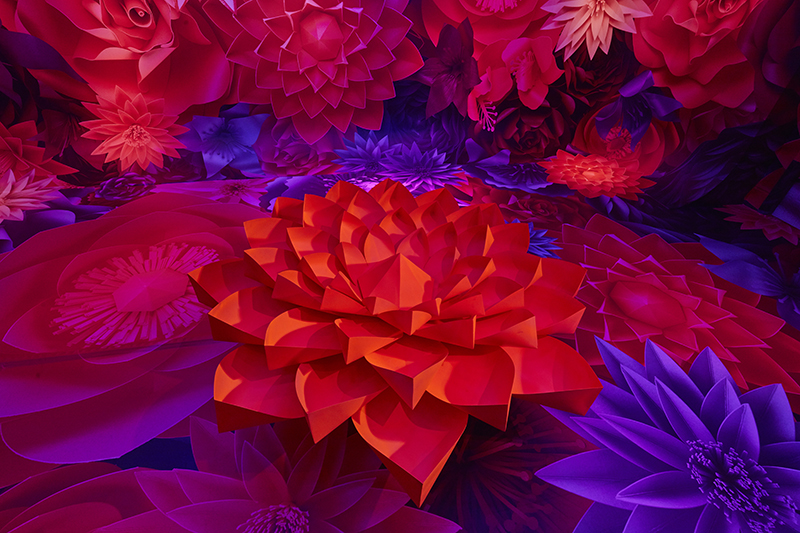
Neon Garden by Zoe Bradley
How do you see paper being used in the future?
CB: I think paper will always be with us, it’s so practical and easy to use. It doesn’t need batteries or power. I think we’ll find more ways to use paper instead of plastic.
SB: We’re definitely becoming a more paperless society, with lots of things becoming ever more digital. But I see this as being counter productive, and i think there will always be a place for paper, for example, for young children to explore mark making on a page and for reading physical books (which are gaining popularity and displaying rising sales).
We are seeing a real trend for paper art, craft and design at the moment, with many paper set designers rising in the ranks of advertising, window displays etc… And as the use of plastics is minimised, perhaps we will begin to consume more paper again as an alternative, such as paper bags, paper straws, and paper cups.
ZB: When I started everything was hand cut, but slowly over time we have turned to technology to create the works of art. We now use laser and die cutting, which means that hundreds of our patterns can be stored. We can speed up the cutting process to allow more time to be dedicated to hand-sculpting scoring, moulding to get the right finish of the paper.
I’d like to see how recycled paper could be better re-imagined in the future. Many of my suppliers already do amazing ranges with recycled paper and materials, but I think we have only just seen the beginning of where it could be developed. I am conscious of the environmental impact paper sourcing has on our environment.
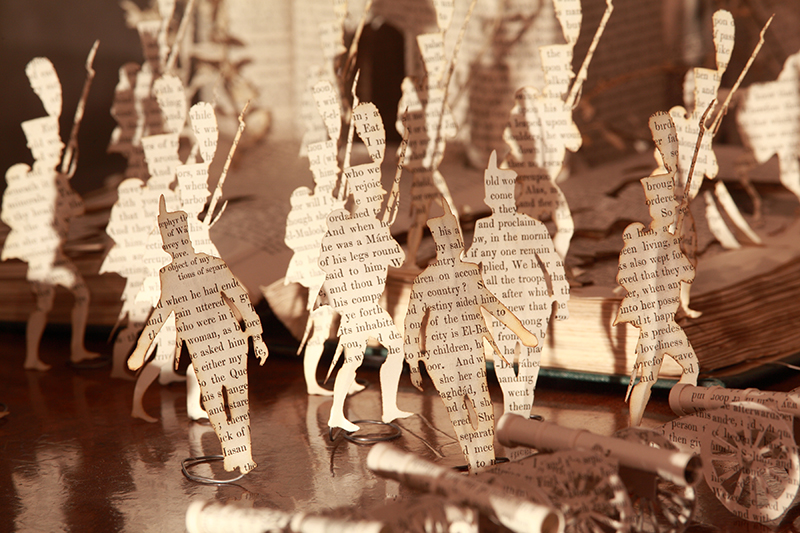
Installation at The Bronte Parsonage by Su Blackwell




